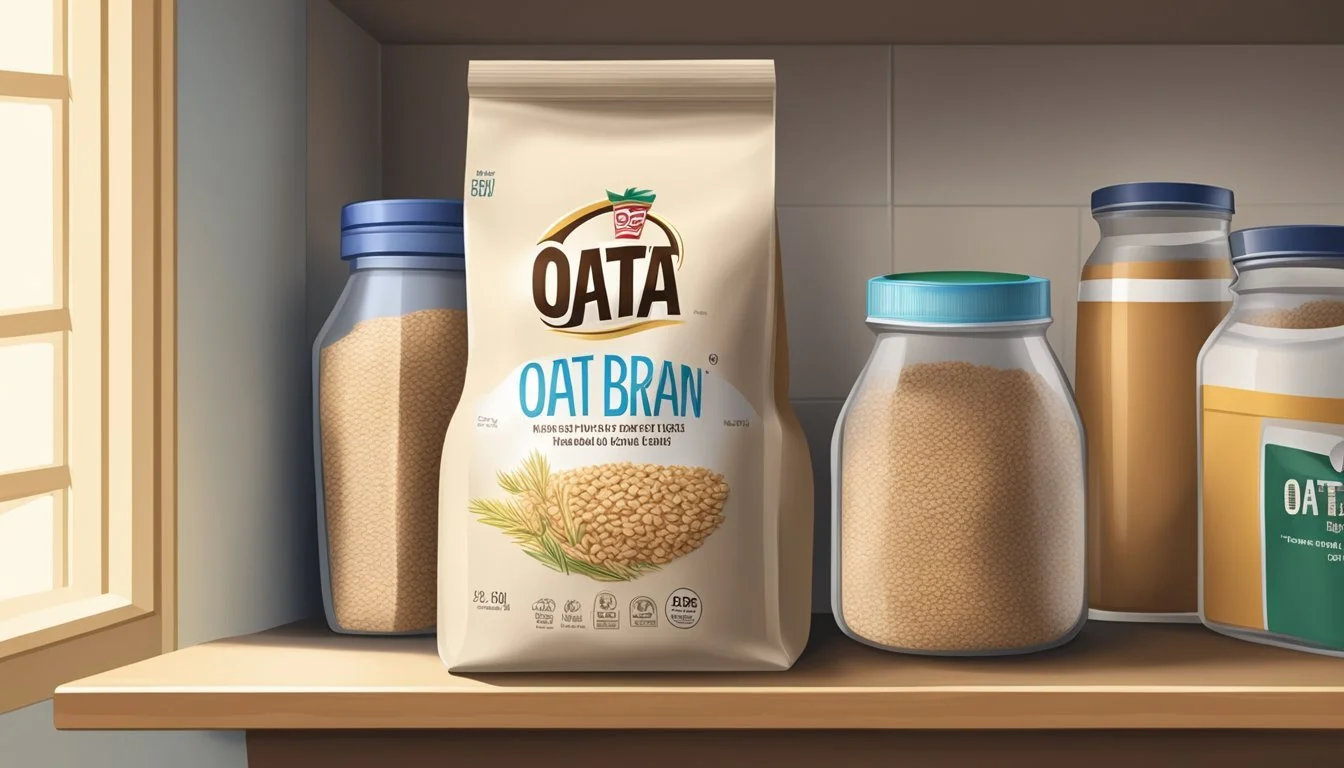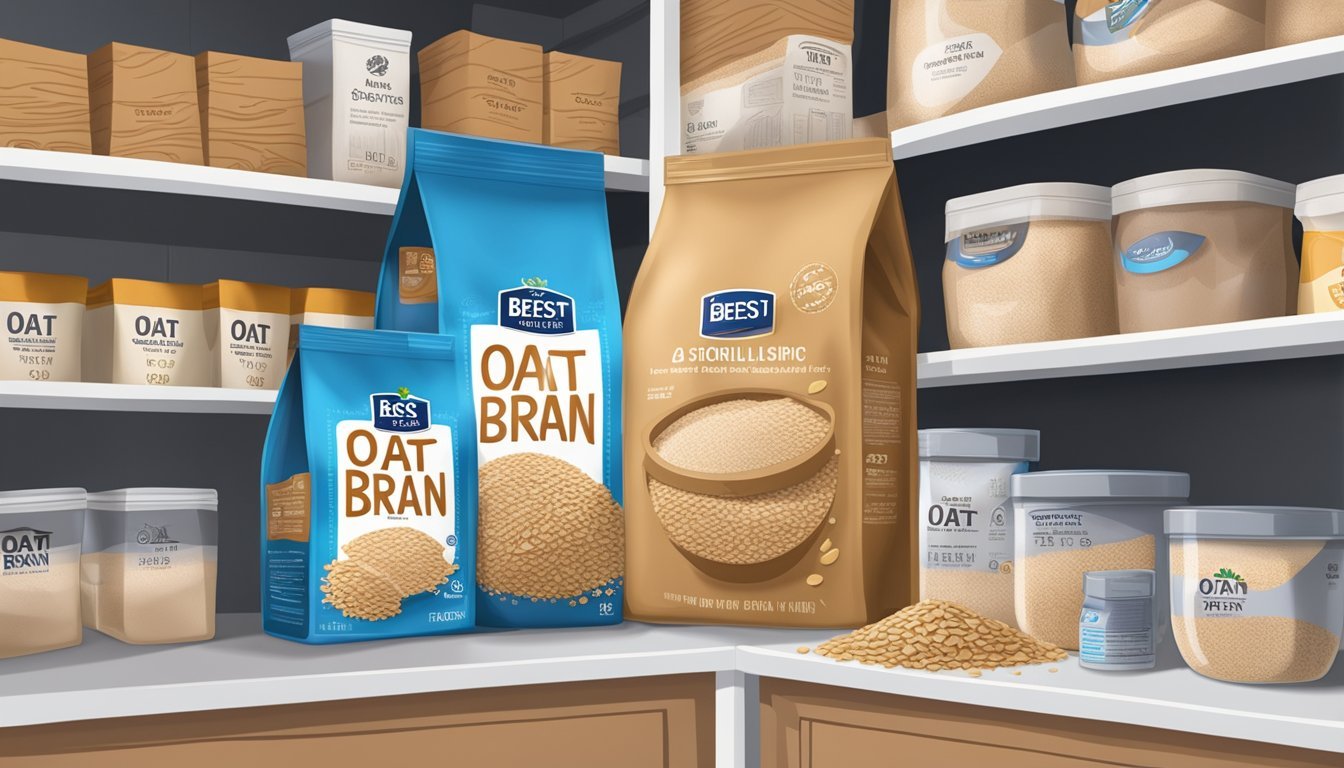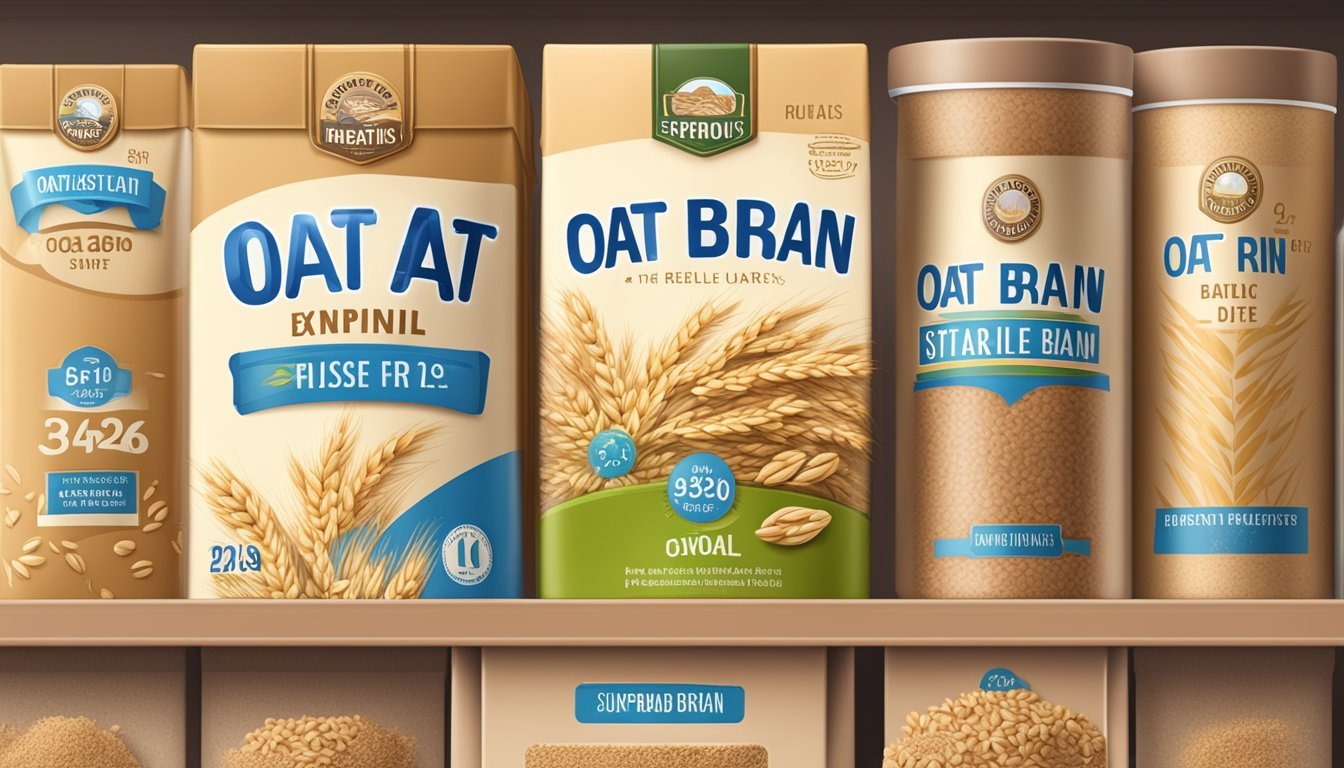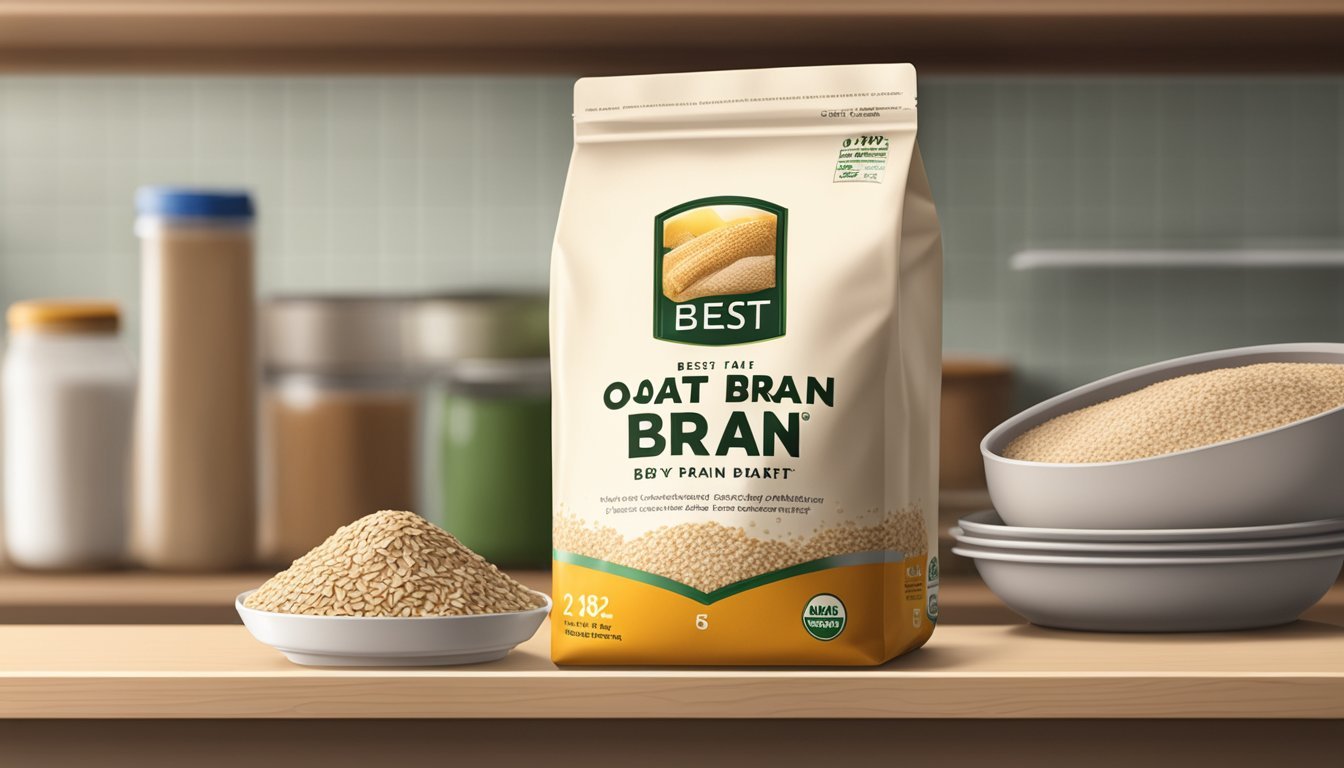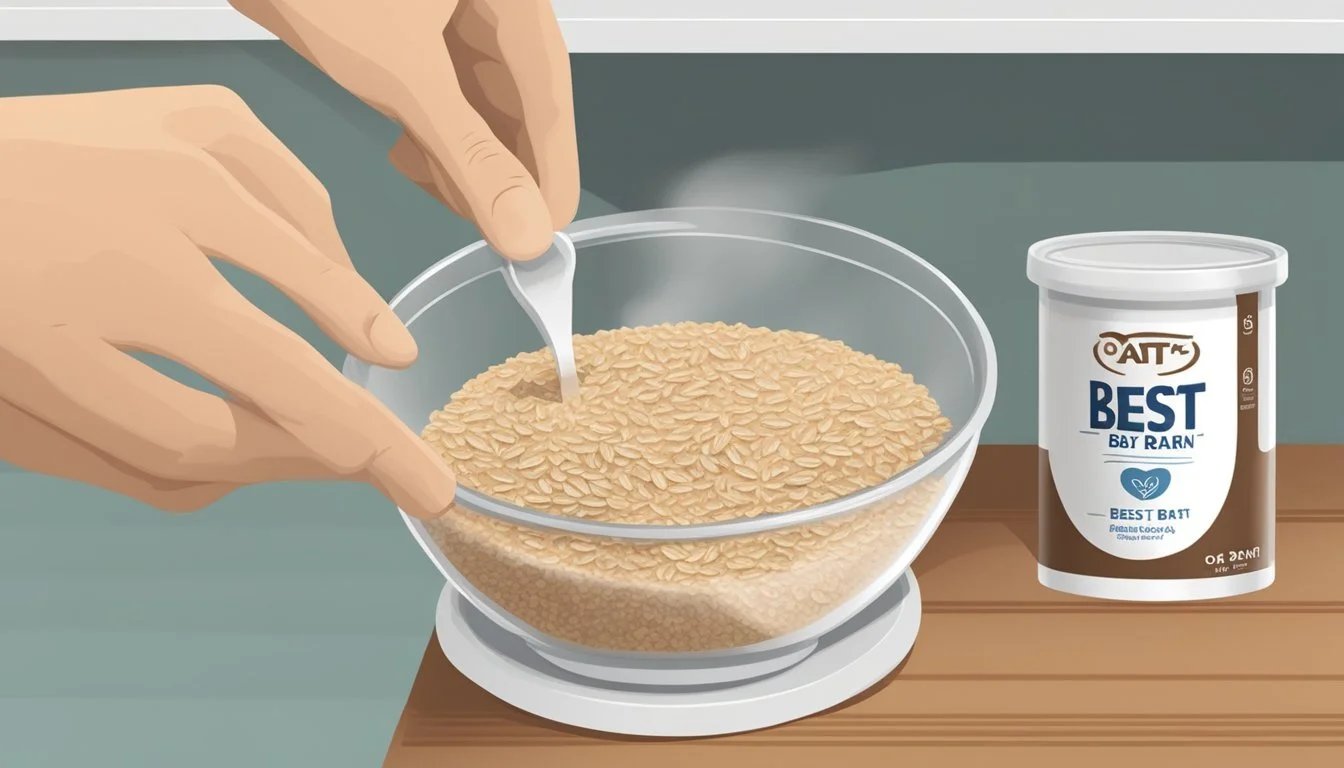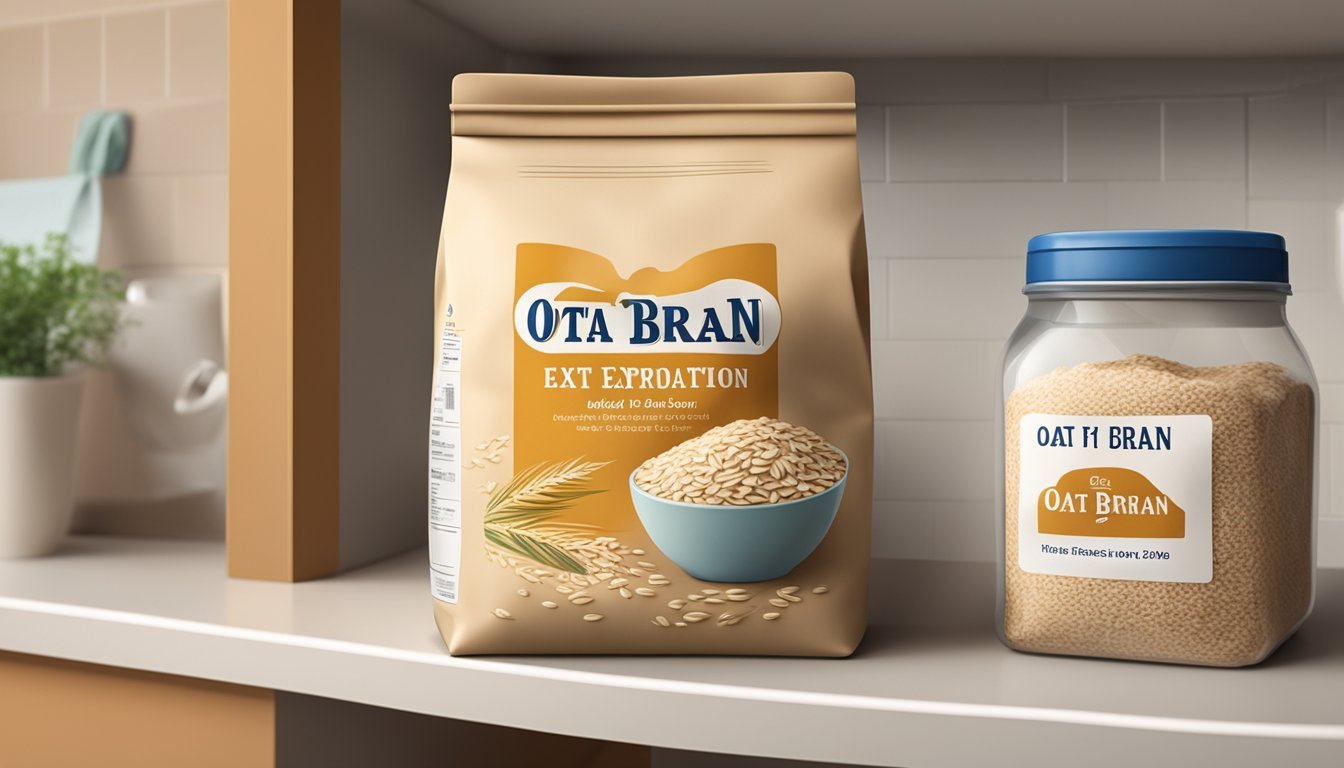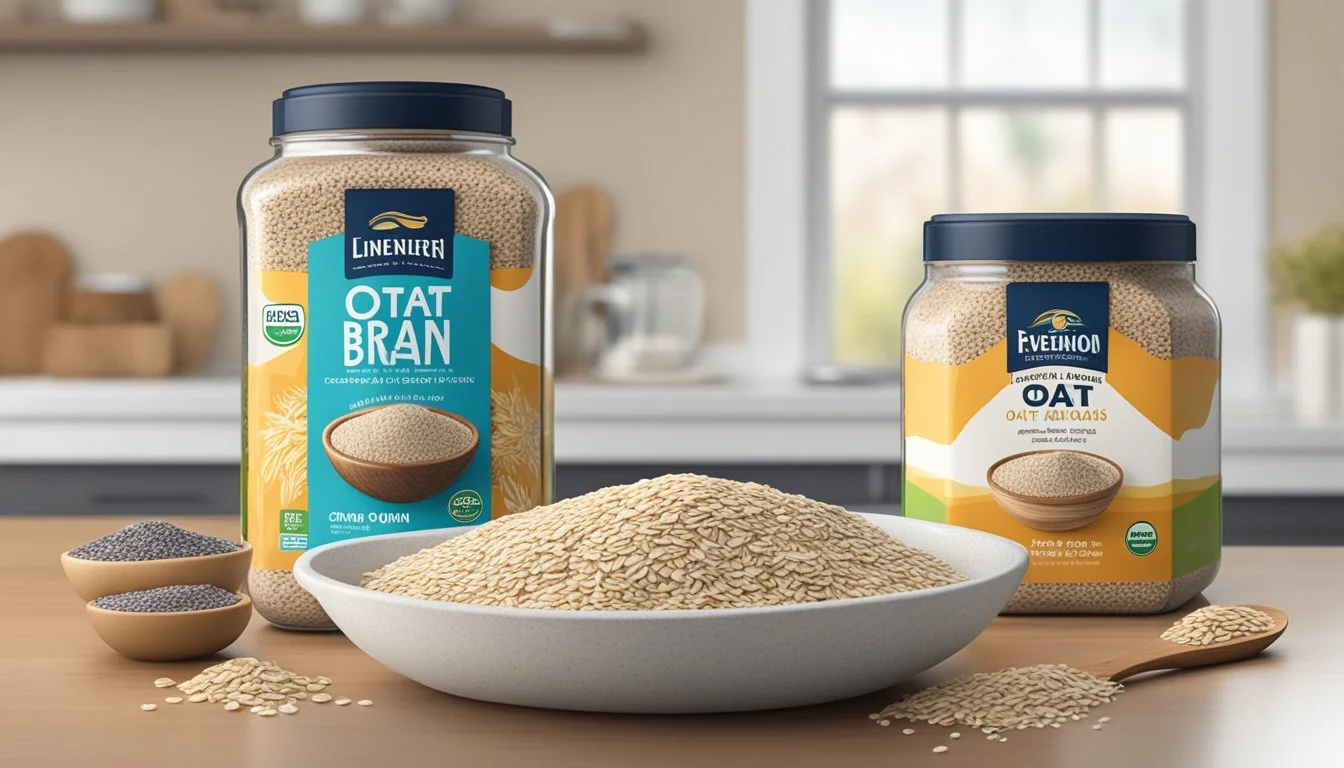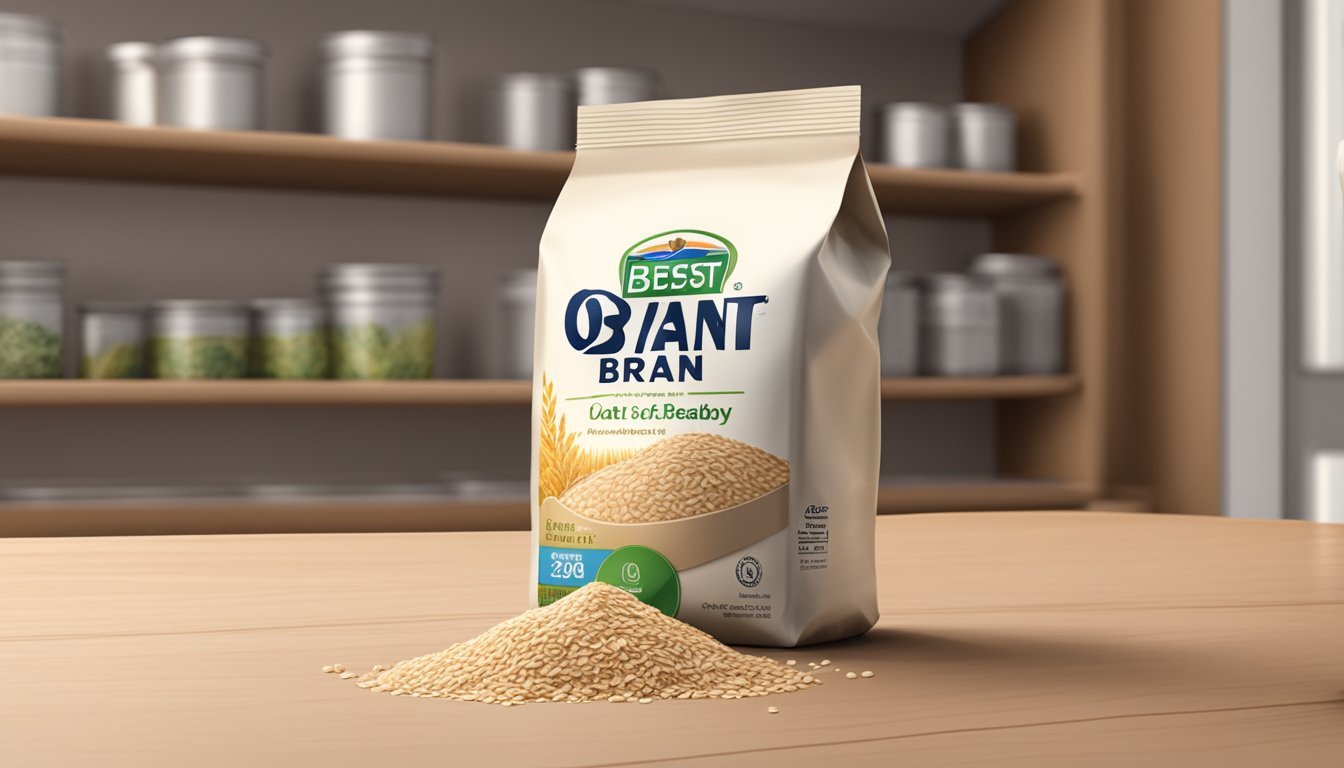How Long Does Oat Bran Last?
Shelf Life and Storage Tips
Oat bran, the outer layer of the oat grain, is a nutritious food known for its high fiber and protein content. While commonly included in diets for its beneficial qualities, oat bran is also susceptible to spoilage due to its natural oil content. Understanding the longevity of oat bran is essential for maintaining its nutritional benefits and ensuring food safety.
Proper storage of oat bran is key to extending its shelf life. When stored in a cool, dry, and dark place, oat bran can last for about three months. Factors such as exposure to air, light, and moisture can accelerate the degradation process and potentially lead to rancidity. As such, it is crucial to take the correct measures to preserve the quality of oat bran.
Understanding Oat Bran
Oat bran is derived from the outer husk of the oat grain and is recognized for its dietary benefits, particularly its high fiber content which contributes to numerous health advantages.
Composition and Nutritional Value
Oat bran is particularly noted for its high soluble fiber content, which has been associated with the ability to lower cholesterol and support heart health. The bran portion of the oats is nutrient-dense and packed with a variety of vitamins and minerals such as calcium, iron, and antioxidants which play a role in combating inflammation and promoting overall wellness. In terms of macros, oat bran contains a significant amount of protein, enhancing its nutritional profile.
Nutritional Breakdown of Oat Bran:
Fiber: High in both soluble and insoluble fiber
Protein: Contains more protein per serving compared to oatmeal
Vitamins/Minerals: Rich source of B-vitamins, iron, and magnesium
Antioxidants: Contains antioxidants that help reduce inflammation and support health
Health Benefits: Contributes to heart health and can help manage blood sugar levels
Varieties of Oats
There are various types of oats available which differ based on their processing and nutritional characteristics. The primary types include:
Whole Oat Groats: The unprocessed, whole kernel – high in nutrients but takes the longest to cook.
Steel-Cut Oats (how long do steel-cut oats last?): Oat groats (how long do oat groats last?) that have been sliced into pieces; they're chewy and nutritious.
Rolled Oats (how long do rolled oats last?) (Old Fashioned): Whole oats that are steamed and flattened; they're a common choice for oatmeal.
Quick Oats: Rolled oats that are cut into smaller pieces to cook faster, slightly less fiber than other forms.
Instant Oats: Finely cut and precooked for instant preparation, lowest in fiber and often contain added sugars.
Oat Bran: The outer layer of the oat groat rich in fiber; can be eaten as cereal or added to foods.
Each of these oat varieties contains whole grains and provide various nutrition benefits; however, oat bran stands out for its specific health properties geared towards improving heart health and offering a dense source of fiber and nutrients.
Storage Fundamentals
When storing oat bran, specific conditions and container types play an essential role in maintaining its freshness and extending shelf life.
Optimal Storage Conditions
Oat bran's shelf life is significantly influenced by the storage environment. It is imperative to keep oat bran in a cool and dry place, away from any direct sources of heat and moisture. The recommended temperature for storage should ideally be less than 70°F (21°C). Consistent temperatures and controlled humidity levels help prevent the natural oils in oat bran from turning rancid, thus extending its usability.
Container Types
The choice of container is crucial for preserving oat bran's quality. Containers which are airtight are the best option, as they prevent exposure to air, light, and pests. Materials such as glass or thick plastic are suitable for storage, provided they can create an effective seal. Utilizing containers like a #10 can with an oxygen absorber may extend the shelf life of oat bran to a year or more, ensuring it remains fresh for
Shelf Life of Oat Bran
Understanding the shelf life of oat bran is essential for maintaining its nutritional benefits and flavor. Typically, oat bran can remain fresh for consumption well beyond the purchase date when stored correctly.
Typical Shelf Life
Oat bran typically has a shelf life of up to 12 months when stored in a cool, dry place. A "best by" or "use by" date is often printed on the packaging to indicate the duration for which the product is expected to retain its optimal quality.
Factors Affecting Longevity
Several factors influence the longevity of oat bran:
Packaging: Unopened and airtight packaging can extend the shelf life, keeping the oat bran fresh until the expiration date or even longer.
Storage Conditions: Exposure to moisture, heat, or light can reduce oat bran's shelf life, causing it to spoil faster. Freezing oat bran may extend its usability with minimal quality degradation.
Fat Content: Since oat bran contains fat, it can turn rancid. It is vital to store it away from direct light or any source of heat to prevent spoilage.
Signs of Spoilage
When oat bran spoils, it exhibits certain signs that are detectable through visual inspection, smell, and texture. Recognizing these indicators can prevent the consumption of unsafe food.
Visual Indicators
One can detect spoilage in oat bran by carefully examining its appearance. If the color of oat bran changes or there is any visible mold growth, it indicates spoilage. Signs to look for include:
Discoloration: Any significant changes from its natural hue may suggest spoilage.
Mold: White or green fuzzy spots are signs of mold, and the oat bran should not be consumed.
Olfactory Cues
Olfactory cues, or the way oat bran smells, are strong indicators of its condition. Oat bran should have a natural, slightly nutty scent. Spoilage is often accompanied by:
Sour or musty odors: These smells suggest the presence of bacteria or mold.
Rancidity: A sharp, unpleasant smell is indicative of rancid oils within the bran.
Texture Changes
Finally, the texture of oat bran can indicate whether it is still good to eat or not. Original textures can change due to moisture absorption or mold.
Moisture: Any signs of moisture or clumping can suggest spoilage.
Changes in texture: If the oat bran feels slimy or excessively dry, it is likely no longer safe to consume.
Preventing Spoilage
In ensuring long-lasting freshness, oat bran owners should be vigilant in managing moisture, oxygen, temperature, and light, as these factors significantly influence the shelf life and quality of the grains.
Moisture and Oxygen Control
Preserving oat bran effectively requires strict control of moisture and oxygen levels. Grains are susceptible to spoilage due to these two factors, which can result in mold growth and rancidity. To sidestep these issues:
Container: An airtight container is vital; it aids in keeping the oat bran secure from external moisture and oxygen.
Grains: Upon storing the grains, users should ensure there is minimal air space left inside the container to minimize oxygen exposure.
Temperature and Light Management
Temperature and light are critical elements in the storage of oat bran. These components can alter the grain's structural integrity and potentially shorten its shelf life.
Heat: Oat bran should be stashed in a cool environment to slow down any biochemical reactions that could degrade the grains.
Cool and Dry Place: An ideal storage condition is a cool, dry place away from any sources of heat like sunlight or appliances. This helps maintain the grain's quality and prevents spoilage.
Light: Minimize light exposure as it can lead to a loss of nutrients in the oat bran and potentially increase the risk of rancidity.
Safety and Consumption
When considering the safety and consumption of oat bran, one must weigh the implications of surpassing the 'Best By' date, as well as understand the potential risks of consuming spoiled oat bran.
Edible After 'Best By' Date?
Oat bran typically comes with a 'Best By' date which indicates the point by which its peak quality is expected to diminish. However, this does not signal immediate spoilage. Oat bran can often remain safe to consume after this date if stored properly—in a cool, dry, and dark place. It may last a considerable time beyond the 'Best By' date without significant loss in quality or safety.
Risks Involved with Spoiled Oat Bran
Spoilage of oat bran is usually identifiable through changes in smell, taste, and texture. Consumption of spoiled oat bran can pose health risks, including foodborne illnesses. Key indicators of spoilage include:
Mold growth: Visible spores or changes in color signal contamination.
Off-putting smell: A rancid or sour odor is often a sign of spoilage.
Texture changes: Clumping or changes from its natural state may suggest spoilage.
Bacteria and other pathogens can grow in food products that are not stored correctly. Spoiled oat bran should be discarded to prevent the risk of consuming harmful bacteria. It is important to follow food safety guidelines to prevent spoilage and ensure the oat bran remains fit for consumption.
Using Oat Bran Creatively
Oat bran, a byproduct of milling oats, proves versatile in various cooking applications. It enhances nutritional content and can add texture and flavor to numerous dishes.
Culinary Uses
In the realm of culinary creativity, oat bran serves as a valuable ingredient. It not only boosts the fiber content but also adds a pleasant, nutty flavor to dishes. Baked goods benefit significantly from oat bran incorporation: muffins gain a wholesome texture; breads receive a fiber-rich lift. Smoothies infused with oat bran, particularly when blended with cinnamon and cream, offer a heartier, more nutritious beverage option. For breakfast, one can transform the traditional oatmeal or porridge by partially substituting rolled oats, steel cut oats, or quick oats with oat bran, thereby enhancing the soluble fiber content.
Examples of oat bran in recipes include:
Oat bran, when added to yogurt, can provide an extra crunch and boost of fiber.
Muffins with a mix of oat bran and flour yield a denser, yet moist texture.
Extending Usability
To extend the usability of oat bran beyond its typical shelf life, it's crucial to store it properly. Steaming and cooking processes can activate its durability when incorporated into prepared dishes. Incorporating oat bran into recipes can help maintain its freshness longer as compared to leaving it in its raw state. For instance, creating a batch of oat bran muffins or blending it into a smoothie mix can keep the oat bran in a more stable form, allowing for extended enjoyment over time.
Key storage tips for oat bran include:
Sealed containers, away from heat and moisture, to deter spoilage.
Refrigeration of oat bran can prolong its freshness, especially after opening.
Understanding Expiration Terms
When consumers purchase oat bran, they often encounter terms such as "expiration date," "best by," and "use by." These terms play a crucial role in determining the shelf life of oat bran.
Interpreting Labels
Expiration Date: This label indicates the final day the product is guaranteed to maintain its peak quality and freshness. After this date, oat bran may not necessarily be unsafe to eat, but it could be less fresh or less effective in terms of taste and nutritional value.
Best By: This term suggests the time frame in which the oat bran is at its optimal quality. It refers to quality rather than safety; oat bran can potentially be consumed past this date, but there might be a notable decline in its flavor and texture.
Use By: This label is similar to "best by" but often denotes a firmer date by which the product should be consumed. It's especially important to adhere to "use by" dates for perishable items, but for oat bran, which is less perishable, it still indicates when the product starts to lose its optimum quality.
One should note that oat bran's longevity is also influenced by its storage conditions. It's prone to rancidity due to its natural oils, and therefore, should be stored properly to extend its usability beyond these dates without a compromise in safety. Consumers should always inspect their oat bran for signs of spoilage, such as an off smell or visible mold, irrespective of the dates on the package.
Oat Bran Alternatives
When oat bran is not available, individuals can turn to a variety of other grains and flours that provide similar nutritional benefits and can be used in diverse culinary applications.
Comparing with Other Grains
Wheat Bran (how long does wheat bran last?): It is an alternative grain that closely mirrors oat bran in terms of dietary fiber content. However, one might notice a slightly nuttier taste and a drier texture.
Suitable for: Baked goods, cereals, soups
Texture: Drier than oat bran
Flavor: Mildly nutty, may be considered less appealing than oat bran
Flaxseed: This versatile grain serves as an excellent substitute due to its high fiber content and the presence of omega-3 fatty acids.
Suitable for: Smoothies, yogurts, and baked products
Texture: Can add a crunchy texture if used whole
Flavor: Slightly nutty; using ground flaxseed can result in a smoother texture
Buckwheat Flour: (how long does buckwheat flour last?) Another gluten-free option that can be used in place of oat bran for those with gluten sensitivities.
Suitable for: Pancakes, noodles, and pasta
Texture: Heavier and can produce denser baked goods
Flavor: Distinctly earthy and robust
Rice Bran: (how long does rice bran last?) High in dietary fiber and an excellent choice for lowering cholesterol levels, it has gained popularity for its health benefits.
Suitable for: Baking cookies, muffins, and bread recipes
Texture: Similar to oat bran, can be used in a 1:1 ratio for baking
Flavor: Neutral taste that doesn't overpower other ingredients
Whole Wheat Flour (how long does whole wheat flour last?): An all-purpose substitute that integrates well with most recipes requiring oat bran, enhancing the recipe with additional vitamins and minerals.
Suitable for: A broad range of cooking and baking needs
Texture: Can vary depending on the type of whole wheat flour used
Flavor: Slightly denser and heartier than oat bran
Each of these alternatives can cater to different dietary requirements and culinary preferences. They are ideal for those looking for variety in their whole grain consumption or for those with specific allergies or intolerances. Those looking for less processed options may prefer unstabilized, raw alternatives, while others looking for convenience may lean towards readily available flours or dried grains.
Long-Term Storage Solutions
When it comes to extending the shelf life of oat bran, proper storage is crucial. Maintaining the quality of oat bran is achievable by controlling factors such as temperature, exposure to air, and moisture levels.
Refrigeration and Freezing
Refrigeration preserves oat bran by slowing down the oxidation process. An airtight container is essential when storing oat bran in the fridge, as it prevents the infiltration of odors and moisture, which can compromise the bran's quality.
Best Practices for Refrigeration:
Store in an airtight container.
Label with the date of storage.
Consume within 6 months for optimal freshness.
Freezing offers a long-term solution, significantly extending the shelf life of oat bran to up to 12 months. Like refrigeration, it's important to use airtight containers or freezer bags to minimize the oat bran's exposure to oxygen, which can lead to rancidity.
Best Practices for Freezing:
Use airtight containers or freezer bags.
Remove as much air as possible before sealing.
Thaw only the amount needed to maintain the rest in a frozen state.
Commercial Processing Impact
Commercial processing of oat bran is critical in ensuring that its shelf life is extended while maintaining its nutritional value.
Shelf Life Extension
Commercially processed oats undergo various treatments to increase their shelf life. One key procedure involves conditioning with saturated steam followed by kiln drying. The kiln drying process not only develops the distinctive oat taste but also contributes to starch gelatinization, which is crucial for both the texture and longevity of the oat bran. During the kiln drying, oats are exposed to high temperatures, typically between 88-98°C, for a period that can extend up to 100 minutes. This intense heating serves to reduce the presence of microflora that can lead to spoilage.
Furthermore, superheated steam processing has emerged as a technique that enhances the shelf life of oat bran without significant nutrient loss. It reduces moisture content, thereby inhibiting the growth of spoilage agents such as bacteria and fungi. Commercially processed oat bran treated in this manner can maintain quality over a longer period, ensuring it remains safe and consumable for an extended time, whether it is in raw form or included as part of various food products.
Nutrient Preservation
To maintain the nutritional value of oat bran, correct storage is essential. Properly stored oat bran retains its high levels of protein, fiber, vitamins, and minerals, benefiting heart health.
Retention of Health Benefits
Oat bran is renowned for its high nutritional value, particularly its protein and fiber content, which are paramount for a balanced diet. The fiber in oat bran not only aids digestion but also contributes to heart health by helping to regulate cholesterol levels. Additionally, the protein found in oat bran supports muscle repair and growth.
It also contains essential vitamins and minerals that support overall health. However, these nutrients can degrade over time if not stored properly. Oat bran should be kept in a cool, dark place to prevent the degradation of these vital nutrients. Exposure to light, air, and heat can decrease the effectiveness and benefits of the nutritional elements.
Absence of moisture is also critical in preserving oat bran's nutrient profile, preventing spoilage and the growth of mold and bacteria. Freezing oat bran can further extend its shelf life, allowing it to maintain its health benefits for up to one year. During storage, precautions should be taken to ensure the container is airtight to avoid the oxidation process that can lead to rancidity, particularly of the fats within the oat bran.
By adhering to these storage recommendations, the retention of oat bran's health benefits can be maximized, making it a durable and valuable component of a nutritious diet.


